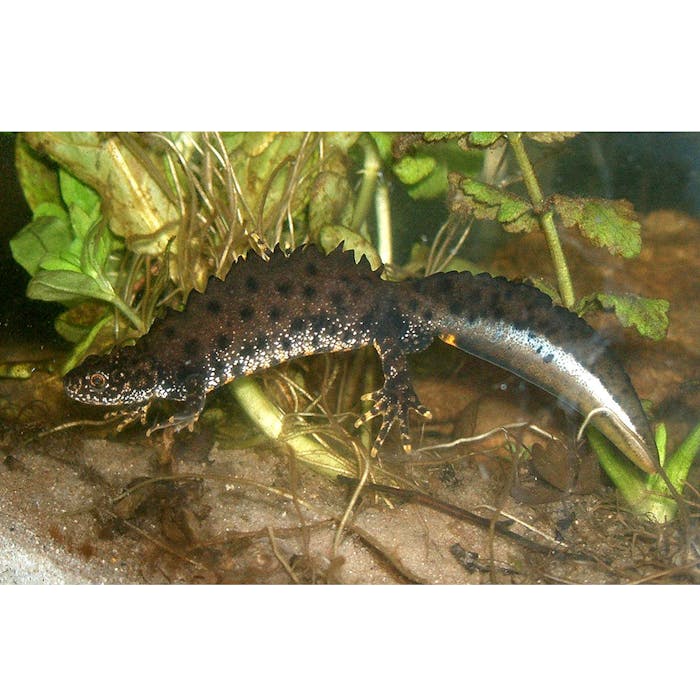
Great Crested Newt - scourge of housebuilders!
Great Crested Newts are one of three newt species in the UK and are also the biggest. These interesting amphibians have become the legendary foe of builders, as they are heavily protected by UK and European law and their discovery on the site is notorious for delaying or disrupting development plans.
Great Crested Newts have been around for approximately 40 million years. They are amphibians, breeding in ponds during the spring and spending most of the rest of the year feeding on invertebrates in woodland, hedgerows, marshes and tussocky grassland. They hibernate underground, among tree roots and in old walls. The UK's populations of the great crested newt are internationally important.
They are widely distributed throughout Britain but this distribution is extremely patchy; they are absent from Ireland and have disappeared from many sites across Europe due to habitat loss and intensification of farming practises.
Adults are up to 15 cm in length. The skin is black or dark brown and has a rough, ‘warty’ appearance. The underside is bright orange with irregular black blotches. These are as unique as a fingerprint, and can be used to identify individuals. Males have a crest along their backs which is more pronounced during the breeding season. Males have a white flash on the tail and females a yellow/orange one.
Great Crested Newts favour large ponds with abundant weeds and no fish. They are active at night, spending the day at the bottom of ponds or in vegetation. They feed mainly on invertebrates and tadpoles.
The females lay single eggs folded inside leaves of aquatic plants. The larvae develop in water and have feathery gills around the head, distinguishing them from frog and toad tadpoles; they have a mottled appearance and a tiny filament at the end of the tail. They grow legs (front first, unlike frogs) and they leave the water as newtlets (or efts) when they have fully absorbed their gills, around August.
Newts are eaten by foxes, badgers, rats, hedgehogs and birds.
Great Crested Newts are a highly protected species, and organisations planning to build on land with suitable water habitats usually check for their presence at an early stage. This can include checking water for newt DNA! Sadly, the expensive mitigation procedures required by law to safeguard newts on land under development rarely seem to work well for the newts. In recent years, the Government has toyed with the idea of repealing protective legislation in order to enable housebuilding.
Further reading
Links to external websites are not maintained by Bite Sized Britain. They are provided to give users access to additional information. Bite Sized Britain is not responsible for the content of these external websites.
